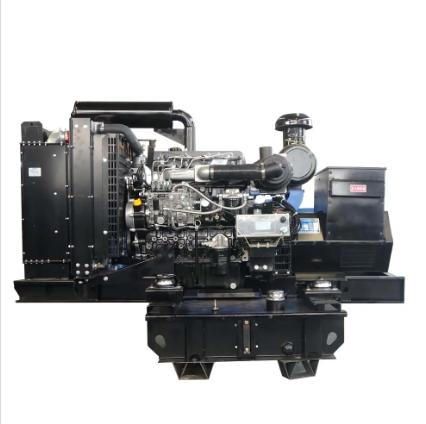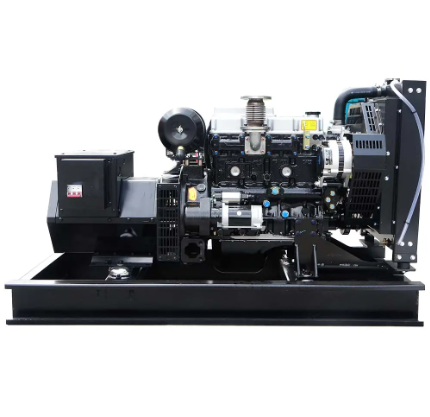안전을 위한 적합한 전기 발전기 선택하기
휴대용 vs. 대기형 발전기: 주요 차이점
전기 발전기를 선택할 때 휴대용 발전기와 대기형 발전기의 차이를 아는 것이 매우 중요합니다. 휴대용 발전기는 마당, 공사 현장, 캠핑카(RV)에서 교통 소음으로부터 좋은 차단 장치 역할을 하며, 정전 시에도 사용할 수 있습니다. 이러한 발전기는 매우 합리적인 가격이며 제한된 응급 전원을 지원합니다. 집 반면에, 대기형 발전기는 더 강력한 안전망을 제공합니다. 이들은 고정 배선되어 있으며 정전 시 자동으로 작동하기 때문에 전기 회로 문제로 인해 전원이 종종 끊기는 주택 및 상업 시설에 이상적입니다. 휴대용 발전기는 이동성이 있지만 용량이 작고 수동으로 운영해야 합니다. 대기형 발전기는 자동화된 발전기이지만 구매 및 설치 비용이 더 비쌉니다. 필요와 예산에 따라 선택하면 됩니다.
발전기 용량을 귀하의 필요에 맞추기
발전기의 와트를 계산하는 방법을 아는 것은 구입 시점에 중요한 결정 요소입니다. 먼저 필요한 가전제품과 각각의 와트수를 포함시켜 리스트를 작성하세요. 이를 합산하여 필요한 총 운전 와트를 구하세요. 또한, 서지 와트(가전제품이 처음 켜질 때 필요한 추가 전력)도 고려해야 합니다. 미래의 영양 보충제를 대비하라: 발전기를 선택할 때 미래 부하를 고려하라 이는 발전기가 향후 추가적인 가전제품이나 새로운 모델을 수용할 수 있음을 의미합니다. 오늘 발전기를 선택할 때 이러한 미래 요구사항을 염두에 두면 조기에 업그레이드하거나 교체할 필요가 없습니다.
실내 공기 질을 위한 저배출 옵션
저배출 실내 발전기는 밀폐된 공간에서의 실내 공기 질을 보호하기 위한 훌륭한 해결책입니다. 이들은 인버터 시스템과 가스 기술 같은 현대 기술을 사용하여 탄소 배출을 최소화합니다. 예를 들어, 발전기의 부하에 맞춰 엔진 속도를 조절하는 인버터 발전기는 배출량을 크게 줄이는 데 기여합니다. 여러 연구에서 더 깨끗한 발전기 배기가스가 사람들의 건강에 직접적인 영향을 미친다는 것이 입증되었습니다. 이는 사람들이 위험한 독성 물질에 노출되는 것을 줄이기 때문입니다. 저배출 발전기를 선택하는 것은 환경에 유리할 뿐만 아니라, 건강과 안전에도 영향을 미치며 특히 건물 내부에서 작동하거나 거주 공간 근처에서 사용될 때 더욱 중요합니다.
전기 발전기의 적절한 설치 및 배치
환기 위해 필요한 실외 배치 요구사항
실외 전기 발전기를 가능한 한 방염성으로 유지하는 것이 중요합니다. 이는 유해한 가스가 축적되는 것을 방지하기 위함입니다. 위험을 줄이기 위해 발전기는 집이나 울타리와 같은 모든 구조물에서 최소 5피트 이상 떨어진 곳에 설치해야 합니다. 국가 전기 규정과 지역 건축 규정을 준수하면 안전한 설치를 보장하는 데 도움이 됩니다. 이러한 지침은 발전기의 성능을 향상시키고 과열로 인해 장치가 손상되거나 화재가 발생하는 것을 방지하기 위해 적절한 통풍을 확보합니다.
구조물로부터의 안전 거리 유지
구조물과 창문으로부터 안전한 거리를 유지하는 것은 일산화탄소 노출을 최소화하는 데 매우 중요합니다. 국가 안전 규정에서는 유독 가스가 실내로 유입되는 것을 방지하기 위해 일정한 거리(대부분 개구부나 창문에서 최소 10피트 이상 떨어진 곳)를 두도록 명시하고 있습니다. 부적절한 위치에 설치할 경우 교통 벌금이나 사고 발생 시 법적 책임을 질 수도 있습니다. 많은 소방서에서는 잘못 설치된 발전기가 화재 위험을 초래하는 사례를 이야기하곤 합니다. 다행히도, 몇 가지 간단한 규칙만 따르면 됩니다.
전기 안전을 위한 접지 기본사항
발전기를 올바르게 지면 접지하는 것은 전기적 위험으로부터 보호하기 위한 기본 안전 조치입니다. 적절한 접지는 구리 접지선을 사용하여 발전기를 지면 접지봉에 연결하는 것을 포함합니다. 필요한 재료는 다음과 같습니다: 접지봉, 구리선, 클램프. 부적절한 선 크기로 인한 하나의 실수도 감전과 같은 안전 사고를 초래할 수 있습니다. 전기 안전 단체들에 따르면, 전기 접지는 전기 발전기와 관련된 사고를 줄이는 데 도움을 줍니다.
전기 발전기의 안전한 운용 방법
연료 안전: 보관 및 취급 규정
적절한 연료 보관 및 취급은 발전기 운영에 중요합니다. 이는 승인된 용기에 보관하고 안전 사고를 방지하기 위해 올바르게 라벨링하는 것을 포함합니다. 기본적인 자가 보호 프로토콜을 따르면 유출을 피할 수 있습니다. 예를 들어, 재충전 시 발전기를 끄고 식히는 것입니다. 또한 장기적으로 안전하게 보관하려면 연료 자체를 서늘하고 건조한 곳에 보관하지 못한다면 안전한 보관이 어려울 수 있습니다. 안전 통계에 따르면 매년 많은 발전기 관련 사고가 부적절한 연료 취급으로 인해 발생합니다. 안전 규범을 준수함으로써 이러한 사고를 크게 줄일 수 있습니다.
일산화탄소 감지 전략
일산화탄소의 위험성은 가족들이 거주지에서 발전기를 사용할 경우 알아야 할 사항이다. CO 경보기의 가치는 이러한 장치들이 중독 시 조기 경고를 제공할 수 있기 때문에 효과적인 안전 계획에서 잘 알려져 있다. 이들은 침실과 공용 공간 근처에 설치하면 최대한 효과적이다. 보건 당국은 매년 수천 명이 일산화탄소 노출로 인해 중독된다고 강조하며, 따라서 탐지는 핵심이다. 이러한 메커니즘을 채택하면 발전기를 사용하는 동안 눈에 보이지 않지만 치명적인 일산화탄소 가스의 위험으로부터 자신을 보호할 수 있다.
중량급 실외용 연장 코드 사용
발전기 사용 시 부하와 화재 위험을 관리하기 위해 적합한 연장 코드를 선택하는 것이 중요합니다. 저는 몇 가지 사양(예: 게이지, 12 이하만 고려)과 길이에 따라 중형 실외용 연장 코드를 선택할 계획입니다. 이를 통해 코드가 제 전력 요구사항에 맞게 설치되도록 보장합니다. 일반적인 배송 오류로는 실내용 코드 또는 너무 얇은 코드를 사용하여 과열과 화재가 발생할 수 있습니다. 적절한 실외용 코드를 선택하면 부하를 관리할 수 있고 모두가 "안전!"하게 사용할 수 있습니다.
역전류 및 그리드 위험 방지
역전류의 위험성 이해
역류는 가정용 발전기에서 발생한 전기가 전력 회사의 송전선로로 유입되는 위험한 상황입니다. 이러한 경우, 전력회사 작업자는 치명적인 감전 사고의 위험에 노출되며, 전력회사의 장비 또한 큰 손실을 입을 수 있습니다. 실제 사례를 보면, 예기치 못한 역류 사고로 인해 전력회사 직원들에게 사상자가 발생한 경우가 여러 차례 보고되었습니다. 전력회사들의 자료에 따르면, 이러한 위험한 사고들은 발전기 잘못된 연결로 인해 발생할 수 있습니다. 예방적 교육과 지식 기반의 프로그램은 이러한 위험을 줄이는 데 핵심적인 역할을 합니다. 우리가 사람들이 발전기를 안전하게 사용하고 역류 사고을 최소화할 수 있도록 교육한다면, 인명과 전력망을 보호할 수 있습니다.
자동 전환 스위치 설치
발전기에서 가장 중요한 요소 중 하나는 ATS(Automatic Transfer Switch)입니다. 전력이 끊길 경우 ATS는 자동으로 대기 전원으로 전환되므로 운영이 중단되지 않습니다. ATS 설치 - ATS는 매우 중요한 장치이며, 설치는 매우 엄격한 전기 규정에 따라야 하므로 전문가에게 맡기는 것이 좋습니다. 인증된 설치를 선택하면 안전 기준을 충족하고 수동 전환 오류의 가능성을 줄여 장기적으로 더 안전하다는 확신을 가질 수 있습니다. 처음에는 스스로 설치하면 비용을 절감할 수 있을 것 같겠지만, 잠재적인 위험은 많고 나중에 시스템이 고장나 전체를 잃을 수도 있습니다!

과부하를 방지하기 위한 전력 관리
발전기를 과부하 상태로 사용하지 않는 것이 중요합니다. 이는 발전기와 연결된 장비에 손상을 줄 수 있습니다. 과부하의 원인은 부적절한 부하 균형과 용량이 큰 가전제품을 무심코 연결하는 것입니다. 위 문제를 방지하기 위해 발전기의 용량을 초과하지 않도록 부하를 신중하게 관리하면 됩니다. 전문가들은 고용량 가전제품의 시작을 순차적으로 하여 부하를 균형 있게 유지하는 것을 권장합니다. 업계 베테랑들이 유용한 조언을 제공하고 있으며, 이를 통해 경험이 적은 사용자들은 발전기가 올바르게 작동할 수 있도록 하고 미래에 발생할 수 있는 과부하 관련 위험을 피할 수 있습니다.
승인된 연료 용기 및 라벨링
연료를 운반할 때 안전을 위해 적절한 연료 용기는 필수적입니다. 승인된 연료 용기는 일반적으로 부식에 강하고 저장된 연료의 압력을 견딜 수 있는 고밀도 폴리에틸렌과 같은 견고한 재질로 만들어집니다. 이러한 통들은 편리한 부어내기용 뚜껑과 증기 방출을 관리하기 위한 통풍구가 장착되어 있습니다. 연료 포장의 올바른 식별과 문서화는 잘못된 보관을 방지하고 취급 시 관련된 위험을 최소화하는 데 중요한 역할을 합니다. 승인된 용기와 명확한 라벨링 미국 소방국 (NFPA) 및 기타 국가 안전 기관은 내용물과 관련된 위험을 나타내기 위해 승인된 용기와 명확한 라벨링 사용을 권장합니다.
열원으로부터 안전한 보관 장소
연료 안전 저장은 열원, 개방화염 및 가연성 물질로부터 떨어진 위치를 선택하는 것을 의미합니다. 이를 통해 화재나 폭발과 같은 위험한 상황을 방지할 수 있습니다. 중요 고려사항으로는 이러한 드럼을 외부에 보관하고 전기 설비나 난방장치에서 떨어진 곳이자 환기가 잘되는 장소에 두는 것이 포함됩니다. 난방기 근처나 밀폐된 공간에 연료를 저장하는 것은 사고를 악화시킬 수 있으므로 매우 위험합니다. OSHA와 같은 규제 기관에서 발표한 규정에서는 연료를 특수한 장소 — 즉, 별도 구역에 위치하거나 이상적으로는 작업 지역이나 주거 건물에서 멀리 떨어진 별도의 시설에 보관하도록 권고하는 매뉴얼 형식의 지침을 제공합니다.
유출 방지 및 비상 대응 절차
연료 유출은 환경과 안전에 위험하며, 이를 대비하여 신속한 대응이 필요합니다. 그리고 만약 유출 사고가 발생한다면, 이를 방지하기 위한 조치 중 하나는 항상 흡수제, 개인 보호 장비, 그리고 유출 범위를 제한하기 위한 장벽으로 가득 채워진 유출 키트를 준비해 두는 것입니다. 이러한 키트는 적절히 배치되어야 하며, 정기적으로 기능 여부를 점검해야 합니다. 즉각적인 대피와 숙련된 직원의 올바른 처리와 같은 긴급 절차는 부상 감소에 필수적입니다. 전국적으로 발생하는 유출 사례들은 효과적인 계획을 마련한 기업들이 피해와 비용을 크게 줄였다는 것을 보여줍니다. 이러한 준비는 더 넓은 의미에서 안전 관리에 기여하며 대비성을 확보하는 데 도움이 됩니다.
자주 묻는 질문
휴대용 발전기와 스탠바이 발전기의 주요 차이는 무엇입니까?
휴대용 발전기는 다재다능하고 이동이 용이하며 일시적으로 사용하기 적합하고 비용 효율적입니다. 대기 발전기는 영구적으로 설치되며 자동 작동을 제공하며 가정이나 사업체에서 중단 없는 전원 공급에 이상적입니다.
필요한 발전기 용량을 어떻게 계산하나요?
모든 필수 가전제품과 그들의 와트 요구사항을 나열한 후 이를 더해 필요한 총 운전 와트를 결정합니다. 서지 와트를 고려하고 향후 부하 요구사항을 생각하세요.
저배출 발전기가 중요한 이유는 무엇인가요?
저배출 발전기는 탄소 발자국을 줄이고 실내 공기 질을 유지하는 데 중요하며 특히 폐쇄된 공간에서는 유해 오염 물질에 대한 노출을 최소화하는 데 도움을 줍니다.
역전류란 무엇이며 왜 위험한가요?
역전류는 발전기에서 전력망으로 역방향으로 전기가 흐르는 것을 의미하며, 이는 전력 회사 직원에게 위험을 초래하고 장비를 손상시킬 수 있습니다. 올바른 설치와 인식은 이러한 위험을 방지할 수 있습니다.

